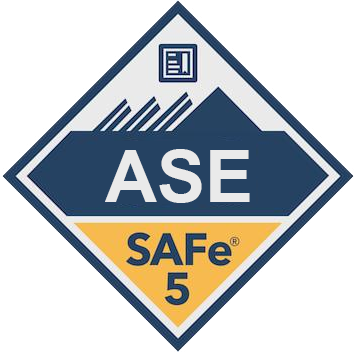Unveiling the “Time to Learn” Metric: Maximizing Learning Efficiency
Introduction:
In the world of education, time plays a crucial role in the pursuit of knowledge and skills. An often-overlooked aspect of education is the measurement of time spent learning and its impact on overall learning outcomes. Enter the “Time to Learn” metric—a significant tool in evaluating the efficiency and effectiveness of learning processes. In this article, we will delve into the concept of Time to Learn, and its significance, and provide an illustrative example for a better understanding.
Definition and Significance of Time to Learn:
Time to Learn refers to the amount of time it takes an individual or a group to fully master or understand a specific concept, skill, or subject matter. It aims to quantify the duration required for a learner to reach a desired level of proficiency. This metric provides a unique perspective on learning efficiency, allowing educators and learners to identify strengths and weaknesses in different instructional approaches.
By understanding the Time to Learn for a certain skill or topic, educators can tailor their teaching methods to be more effective and optimize the allocation of time during instruction. Furthermore, learners can gain valuable insights into their own learning patterns and adjust their study strategies accordingly, resulting in enhanced overall progress.
Example: Time to Learn in Mathematics
Let’s consider a specific example to understand how Time to Learn can be applied in practice. Imagine a middle school classroom where a new topic in mathematics, such as negative number operations, is being introduced. The teacher aims to assess the time it takes for students to grasp the concept fully.
1. Initial Assessment:
Before diving into the topic, the teacher administers a pre-assessment to gauge the student’s current understanding of negative number operations. This establishes a baseline for comparison later.
2. Instruction and Practice:
The teacher employs various teaching strategies, such as interactive presentations, hands-on activities, and guided practice, to explain the concept. Different approaches may be utilized to accommodate diverse learning styles within the classroom.
3. Individual Progress Tracking:
Throughout the instruction period, the teacher collects data on individual students’ progress and understanding using formative assessments, quizzes, and observations. This data helps identify students who may require extra support or accelerated learning.
4. Time to Mastery:
Once the teacher deems that the majority of students have successfully grasped the concept, the class follows up with a post-assessment. The difference in scores between the pre-assessment and the post-assessment helps determine the Time to Learn for the given topic. This metric indicates the duration of instruction required for students to achieve mastery.
Key Takeaways:
By employing the Time to Learn metric, educators gain valuable insights into learning efficiency and effectiveness. It allows them to identify successful instructional practices and pinpoint areas where students struggle. Applying this metric optimizes teaching strategies and enhances learning outcomes.
For students, understanding their Time to Learn helps them to evaluate their own progress and adapt their study methods accordingly. They can utilize the metric to set realistic goals, manage their time efficiently, and take proactive steps toward achieving mastery in various subjects.
Some examples are data on the Time to Learn metric, and calculation
Time to Learn is a metric used to measure the amount of time it takes for an individual or a group to learn a particular skill or concept. This metric is often used in educational institutions, training programs, and online courses to assess the effectiveness and efficiency of the learning process.
Here are some examples and data on the Time to Learn metric and its calculation:
Example 1:
A software development training program wants to measure the Time to Learn for a programming language. They select a group of 20 participants and provide them with online learning materials and exercises. After completing the training, they collect data on the time each participant took to achieve a certain level of proficiency in the programming language.
| Participant | Time to Learn (hours) |
|---|---|
| 1 | 10 |
| 2 | 12 |
| 3 | 9 |
| 4 | 15 |
| 5 | 11 |
| … | … |
| 20 | 13 |
Calculation:
To calculate the average Time to Learn, add up the individual learning times and divide by the total number of participants:
Total Time to Learn = 10 + 12 + 9 + 15 + 11 + … + 13 = 250 hours
Average Time to Learn = Total Time to Learn / Number of Participants = 250 / 20 = 12.5 hours
Example 2:
An e-learning platform wants to evaluate the Time to Learn for a course on data analysis. They collect data from 1000 students who completed the course and track the time they spent on each learning module.
| Student | Time to Learn (hours) |
|---|---|
| 1 | 5 |
| 2 | 7 |
| 3 | 6 |
| 4 | 8 |
| 5 | 5.5 |
| … | … |
| 1000 | 6.5 |
Calculation:
To calculate the median Time to Learn, arrange the individual learning times in ascending order and find the middle value:
Arranged Time to Learn: 5, 5.5, 6, 6, 6.5, 6.5, 7, 8, …
Median Time to Learn = (6 + 6.5) / 2 = 6.25 hours
This median value indicates that half of the students took less than 6.25 hours to learn the course.
These examples highlight how Time to Learn can be measured and calculated to gain insights into learning efficiency and effectiveness.
To start Tracking the Time to Learn metric
Starting to track the Time to Learn metric involves a step-by-step approach. Here are the key steps to get started:
1. Define the learning goal:
Determine what specific skills or knowledge you want to track the time it takes to learn. It could be learning new software, completing a training module, or acquiring a new language.
2. Break down the learning process:
Identify the different steps or stages involved in learning the skill. This could include research, practice, assessment, and reinforcement.
3. Determine the measurement unit:
Decide on the unit you will use to measure time. It can be hours, days, weeks, or any other suitable unit based on the complexity of the skill.
4. Set the starting point:
Establish the starting point for measuring time. It could be the moment a learner begins engaging in the learning activity or the initial exposure to the material.
5. Document the time spent:
Create a system to record the time spent at each step of the learning process. This can be done manually using a spreadsheet, a time-tracking app, or through the use of learning management systems that provide built-in time-tracking features.
6. Regularly update and review:
Encourage learners to update their time spent regularly. Review the progress and provide feedback, if necessary, to ensure accuracy and consistency in tracking.
7. Analyze and interpret the data:
Once you have collected sufficient data, analyze and interpret it to gain insights. Look for patterns, identify any bottlenecks or areas where learners might be struggling, and consider revising your learning strategies based on the data.
8. Refine the learning process:
Use the tracked time data to refine your learning process and optimize learning efficiency. If the time to learn is longer than expected, consider adjustments such as delivering the content in a different format, providing additional resources, or offering targeted support.
9. Continuously monitor and improve:
Keep tracking the Time to Learn metric on an ongoing basis. This will help you monitor the effectiveness of your learning initiatives, identify areas for improvement, and make informed decisions about future training programs.
Remember, the Time to Learn metric is just one aspect of measuring learning outcomes. It should be considered alongside other metrics such as knowledge retention, skill application, and learner feedback to gain a holistic understanding of the effectiveness of your learning programs.
These are the Pros and Cons of Time to Learn metric calculation Data
Pros of Time to Learn metric calculation data:
1. Objective measure:
Time to learn provides an objective measure of the amount of time required for individuals or groups to learn a particular skill or concept. It allows for comparisons across different learners or learning methods.
2. Efficiency analysis:
By tracking the time taken to learn, organizations can analyze the efficiency of their learning programs. This data helps to identify areas where the learning process can be improved and optimized.
3. Resource planning:
Time to learn data allows organizations to better plan and allocate resources for training and learning initiatives. It helps in deciding the appropriate duration and scheduling of training programs.
4. Performance evaluation:
This metric can be used as a performance evaluation tool for learners. It allows for comparison of individuals’ learning speed and progress, enabling targeted support and recognition for high achievers.
5. Benchmarking:
Time to learn data can be used for benchmarking against industry or organizational standards. It helps identify outliers and areas where improvement is needed to align with best practices.
Cons of Time to Learn Metric Calculation Data:
1. Limited context:
Time to learn data only focuses on the duration of learning and may not provide a complete understanding of the quality or effectiveness of the learning experience. It does not capture critical nuances or variations in learners’ prior knowledge, learning styles, or motivation levels.
2. Subjectivity in measurement:
Determining the exact time for learning can be subjective and influenced by various factors such as the complexity of the subject matter, the expertise of trainers, or the availability of learning resources. This subjectivity can affect the reliability of the data.
3. Pressure on learners:
Relying heavily on time to learn data may create pressure on learners to learn quickly, potentially compromising the depth of understanding and retention of knowledge.
4. Ignoring individual differences:
Time to learn data may not consider individual differences in learning abilities or the need for more personalized learning approaches. It can lead to a “one-size-fits-all” approach that may not be suitable for all learners.
5. Incomplete evaluation:
Time to learn data alone does not provide a comprehensive evaluation of the learning process. It is essential to consider other metrics, such as learner feedback, performance outcomes, and application of skills, to have a holistic understanding of the learning experience.
Conclusion:
The Time to Learn metric is a valuable tool in education, enabling educators and learners to gauge the efficiency and effectiveness of instructional methods. Measuring the time required for learners to grasp topics or skills allows for targeted adjustments and helps maximize learning outcomes. By leveraging this metric, educators can propel the educational journey forward, ensuring a holistic and time-efficient approach to learning
For more posts like this follow Agile Digest social Pages or subscribe to our newsletter:
Wesbite: https://agiledigest.com/
Facebook: https://www.facebook.com/agiledigest/
LinkedIn: https://www.linkedin.com/company/agiledigest/
Youtube: https://www.youtube.com/@AgileDigest








































































